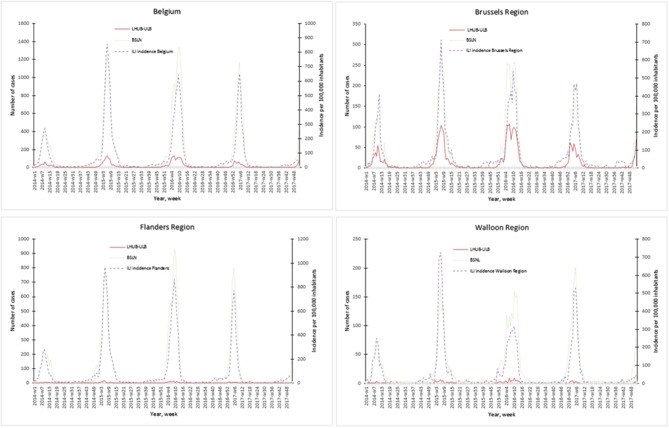Infectious illnesses stay a severe public well being concern globally, whereas the want for dependable and consultant surveillance techniques stays as acute as ever.
The public well being surveillance of infectious illnesses makes use of reported optimistic outcomes from sentinel medical laboratories or laboratory networks, to survey the presence of particular microbial brokers recognized to represent a risk to public well being in a given inhabitants.
This monitoring exercise is usually based mostly on a consultant fraction of the microbiology laboratories nationally reporting to a single central reference level.
However, in recent times a quantity of medical microbiology laboratories (CML) have undergone a course of of consolidation involving a shift towards laboratory amalgamation and nearer real-time informational linkage.
This report goals to examine whether or not such merging actions might need a possible affect on infectious illnesses surveillance. Influenza knowledge was used from Belgian public well being surveillance 2014-2017, to consider whether or not nationwide an infection traits might be estimated equally as successfully from solely only one centralized CML serving the wider Brussels space (LHUB-ULB).
The total comparability reveals that there’s a shut correlation and representativeness of the LHUB-ULB knowledge to the nationwide and worldwide knowledge for the similar time durations, each on epidemiological and molecular grounds.
Notably, the effectiveness of the LHUB-ULB surveillance stays partially topic to native regional variations. A subset of the Influenza samples had their entire genome sequenced in order that the noticed epidemiological traits might be correlated to molecular observations from the similar interval, as an added-value proposition.
These outcomes illustrate that the real-time integration of high-throughput entire genome sequencing platforms accessible in consolidated CMLs into the public well being surveillance system just isn’t solely credible but in addition advantageous to use for future surveillance and prediction functions.
This might be best when carried out for automated detection techniques which may embody a number of layers of data and well timed implementation of management methods.

Establishing a world laboratory community for uncared for tropical illnesses: Understanding current capability in 5 WHO areas.
Background. Limited laboratory capability is a big bottleneck in assembly international targets for the management and elimination of uncared for tropical illnesses (NTD).
Laboratories are important for offering medical knowledge and monitoring knowledge about the standing and adjustments in NTD prevalence, and for detecting early drug resistance.
Currently NTD laboratory networks are casual and specialist laboratory experience just isn’t nicely publicised, making it troublesome to share international experience and present coaching, supervision, and high quality assurance for NTD prognosis and analysis.
This research aimed to establish laboratories inside 5 World Health Organisation areas (South-East Asia, Eastern Mediterranean, Americas, Western Pacific and Europe) that present NTD providers and might be regarded as nationwide or regional reference laboratories, and to conduct a survey to doc their networks and capability to help NTD programmes. Methods.
Potential NTD reference laboratories have been recognized by way of systematic searches, snowball sampling and key informants. Results.
Thirty-two laboratories responded to the survey. The laboratories coated 17 totally different NTDs and their major regional and nationwide roles have been to present technical help and coaching, analysis, check validation and normal setting.
Two thirds of the laboratories have been based mostly in tutorial establishments and nearly half had lower than 11 workers. Although higher than 90 per cent of the laboratories had sufficient technical expertise to operate as an NTD reference laboratory, nearly all laboratories lacked techniques for exterior verification that their outcomes met worldwide requirements. Conclusions.
This research highlights that though many laboratories believed they may act as a reference laboratory, only some had all the traits required to fulfil this position as they fell quick in the normal and high quality assurance of laboratory processes.
Networks of prime quality laboratories are important for the management and elimination of illness and this research presents a essential first step in the growth of such networks for NTDs.

